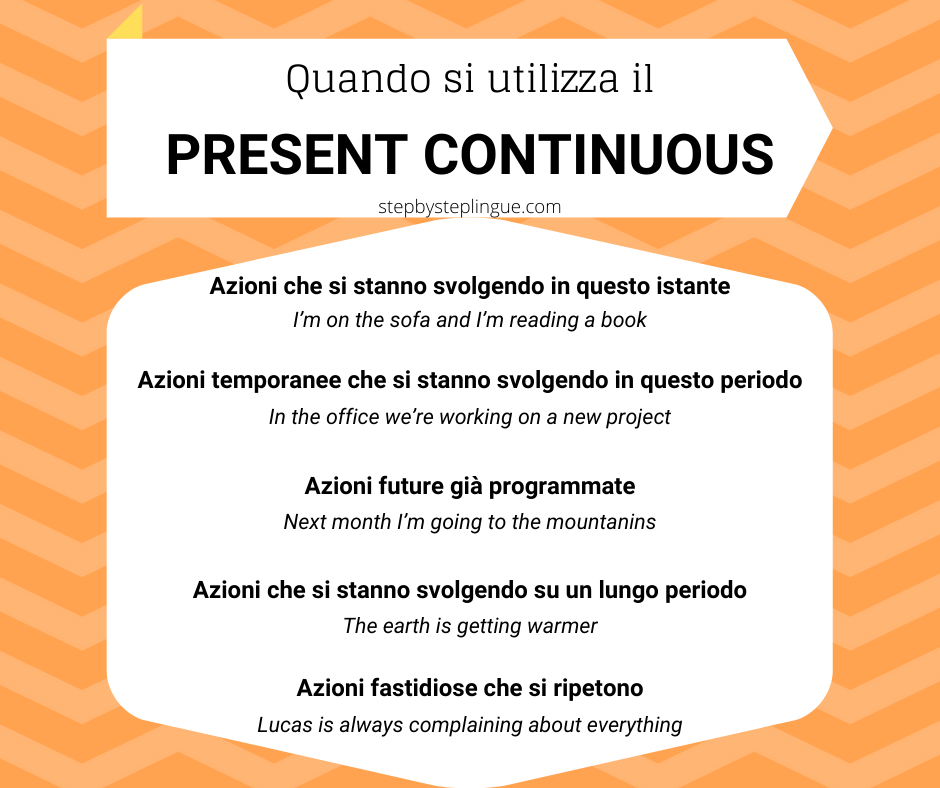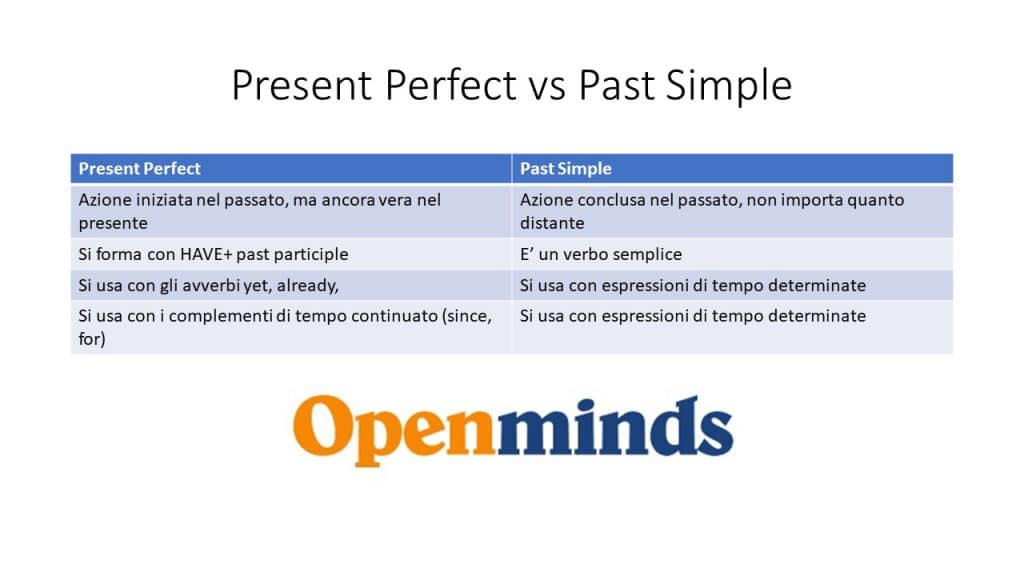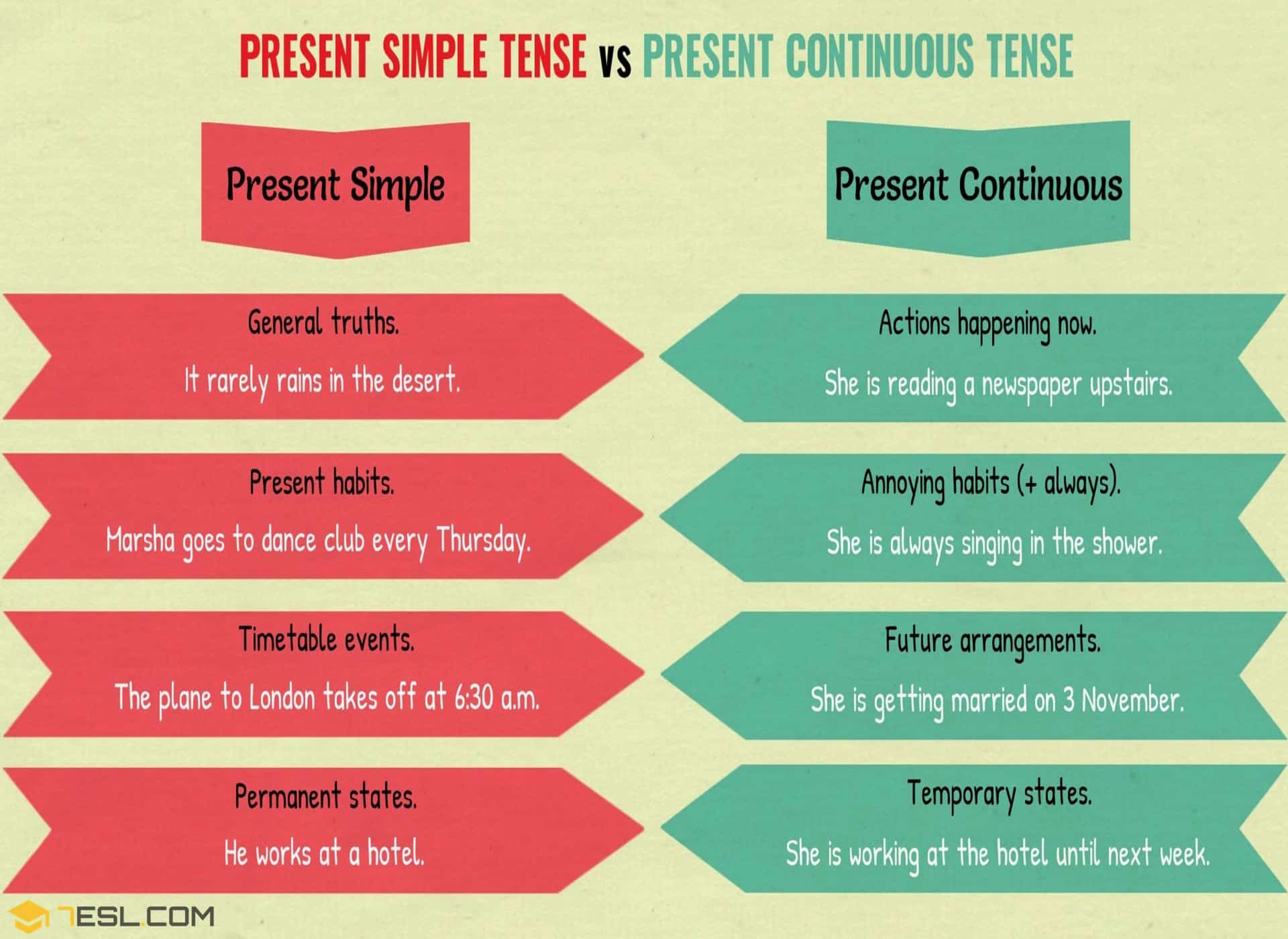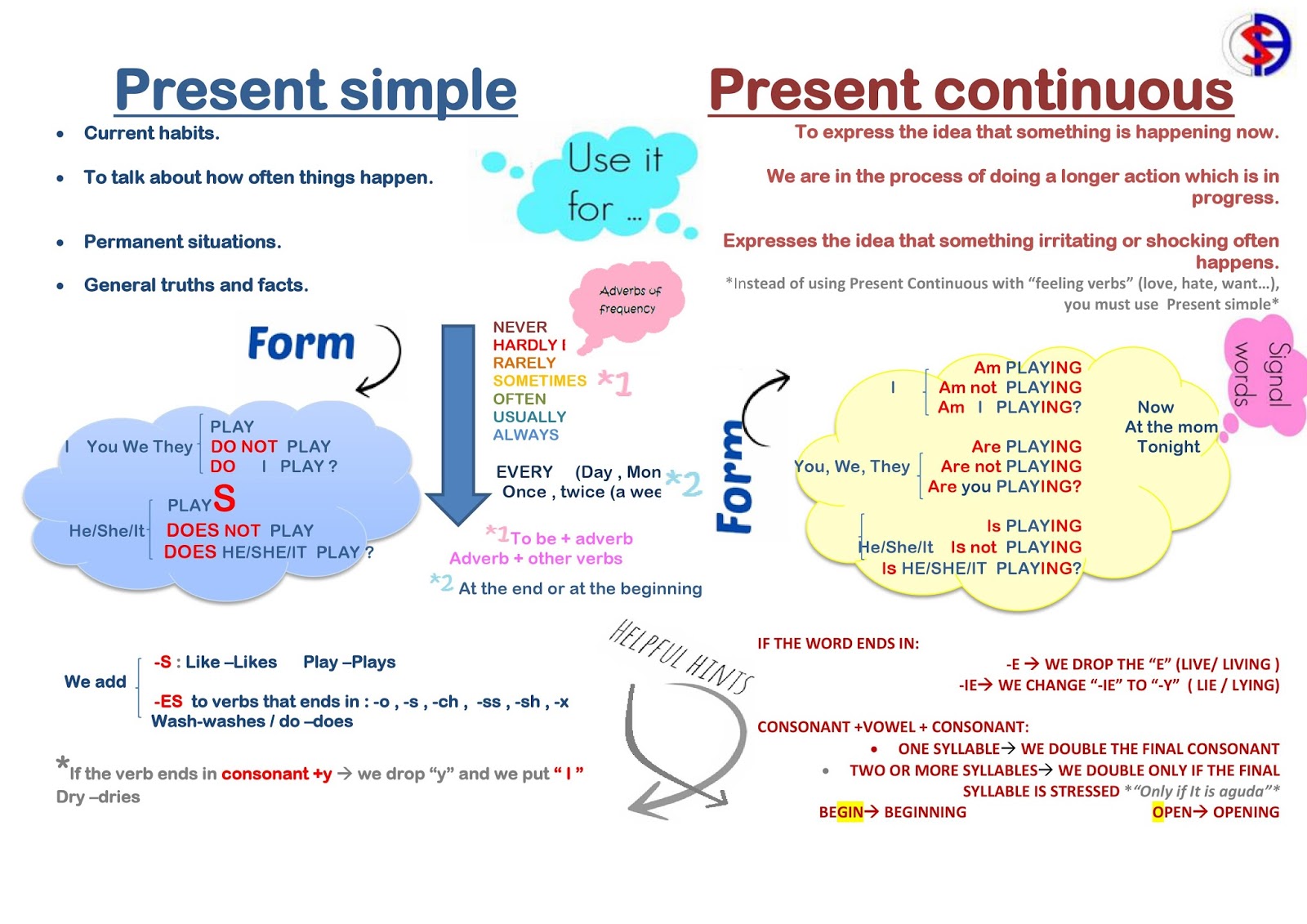
Present Simple Mappa Concettuale
Per parlare di qualcosa che è programmato (per esempio: una visita, un esame, ecc.) usiamo be going to se c'è l'intenzione di fare quella cosa, usiamo il Present Continuous se invece è.

LANGUAGE FOCUS Present Continuous vs Present Simple
Look at these examples to see how will, going to and the present continuous are used. Oh great! That meeting after work's been cancelled. I'll go to that yoga class instead. I'm going to try to visit my relatives in Australia this year. The restaurant is reserved for 8. We're having a drink at Beale's first. Try this exercise to test your grammar.

IL PRESENT CONTINUOUS
Present continuous 1. Matching_MTYyNzM= Present continuous 2. GapFillTyping_MTYyNzQ= future plans or arrangements: Mary is going to a new school next term. What are you doing next week? Present continuous 3 Plans for next month. 2nd (Sat.) - my birthday. Party! 4th - day off 10th (Sun.) - flight OS462 15.40 11th, 12th, 13th - conference.

Language Tools Will, going to, present continuous
Un esercizio per imparare la differenza tra Present continuous e to be going to. Ricorda che. il present continuous si usa quando si parla di azioni future già completamente pianificate-->sono programmi già discussi, concordati, prenotati, decisi. Si conosce quindi il momento del futuro in cui faremo questa cosa (può essere "a Maggio.

Present Simple o Present Continuous? Grammatica inglese, Calendario
Present Continuous or Going To? 08/07/20 Grammar Tips - Verbs Tenses. Minimum level suggested: ELEMENTARY. non esiste solo WILL), e la differenza tra past simple e present perfect - solo per citarne alcuni! Pack without stress - 22 items. Lug 27, 2022 | Travel, Vocabulary quiz. Fare la valigia senza stress. Ecco una lista di 22 cose di.

Present Simple Mappa Concettuale
In questa puntata di Inglese per Tutti viene spiegato il tempo Futuro che in inglese si traduce con Will (o la forma contratta 'll) per decisioni estemporane.

mappa schema tabella dsa futuri inglese will going to present
Una preziosa lezione video sulla differenza tra be going to e il Present Continuous in inglese per il livello pre-intermedio A2. Non sai quale tempo usare quando parli di piani per il futuro? In questa video lezione imparerai la differenza tra questi due tempi grammaticali. Vai avanti e fai clic su Riproduci! A valuable video lesson about the difference between be going to and the Present.

Quando si utilizza il Present Continuous in inglese? Step by Step Lingue
The present continuous tense is mainly used to talk about personal arrangements and fixed plans. Be going to can also be used to express the same idea; however, it puts an extra emphasis on the idea of intention. I am going to get a new job. (= I intend to get a job.) I am getting a new job. (= It is already decided / arranged.

Verb Tenses English Tenses Chart With Useful Rules & Examples 7 E S
Differenza tra Going to e Will. Dal punto di vista grammaticale la differenza è che " Will " è un verbo modale, invece " Going to " non è un verbo modale ma una speciale espressione usata per parlare del futuro. Se qualcuno vi chiede:

Grammatica inglese present simple e present continuous
Futuri inglesi. 1. PRESENT CONTINUOS: sogg. + verbo essere + verbo -ing form. si usa per parlare di programmi gia fissati, prestabiliti. 2. BE GIONG TO: si usa per parlare di intenzioni o di.

Differenza tra Past simple e present perfect come si form e usa
This question appears to be off-topic because it is a duplicate of a previously asked question, but the system won't let me mark it so. - tchrist ♦. May 8, 2014 at 21:59. That's odd, usually by First Certificate level (FCE), the "be going to" and the "present continuous tense" are accepted in these type of phrases.
Present continuos for future
One significant difference between "going to" and present continuous is the level of planning or intention involved. "Going to" is used for planned actions, where the decision has already been made, and there is a clear intention to carry out the action. On the other hand, present continuous is used for actions that have already been arranged.

saltare Psichiatria ozono teoria past continuous gradualmente Clan arti
Learn English grammar with BBC Learning English! 👉 In English grammar, we use 'going to' to talk about something we have decided to do in the future.👉 We c.

Test Engleski jezik, Šesti razred, Present Simple and Present
Will (future simple) is used to make predictions that are based on personal judgement, opinion or intuition: Be going to is used to make predictions that are based on present evidence. The predicted event is either very near (and can be seen) or seems sure to happen: My sister's going to have a baby. (we can see that she is pregnant)

Junior English CSA October 2016
The present continuous tense is mainly used to talk about personal arrangements and fixed plans. Be going to can also be used to express the same idea; however, it puts an extra emphasis on the idea of intention. am going to get a new job. (= I intend to get a job.) am getting a new job. (= It is already decided / arranged.

Travolgente programma scolastico Jet verbi in inglese present
Present continuous and be going to. Il present continuos e be going to sono spesso intercambiabili. Tuttavia si preferisce usare per il futuro il Present continuous per parlare di piani già.